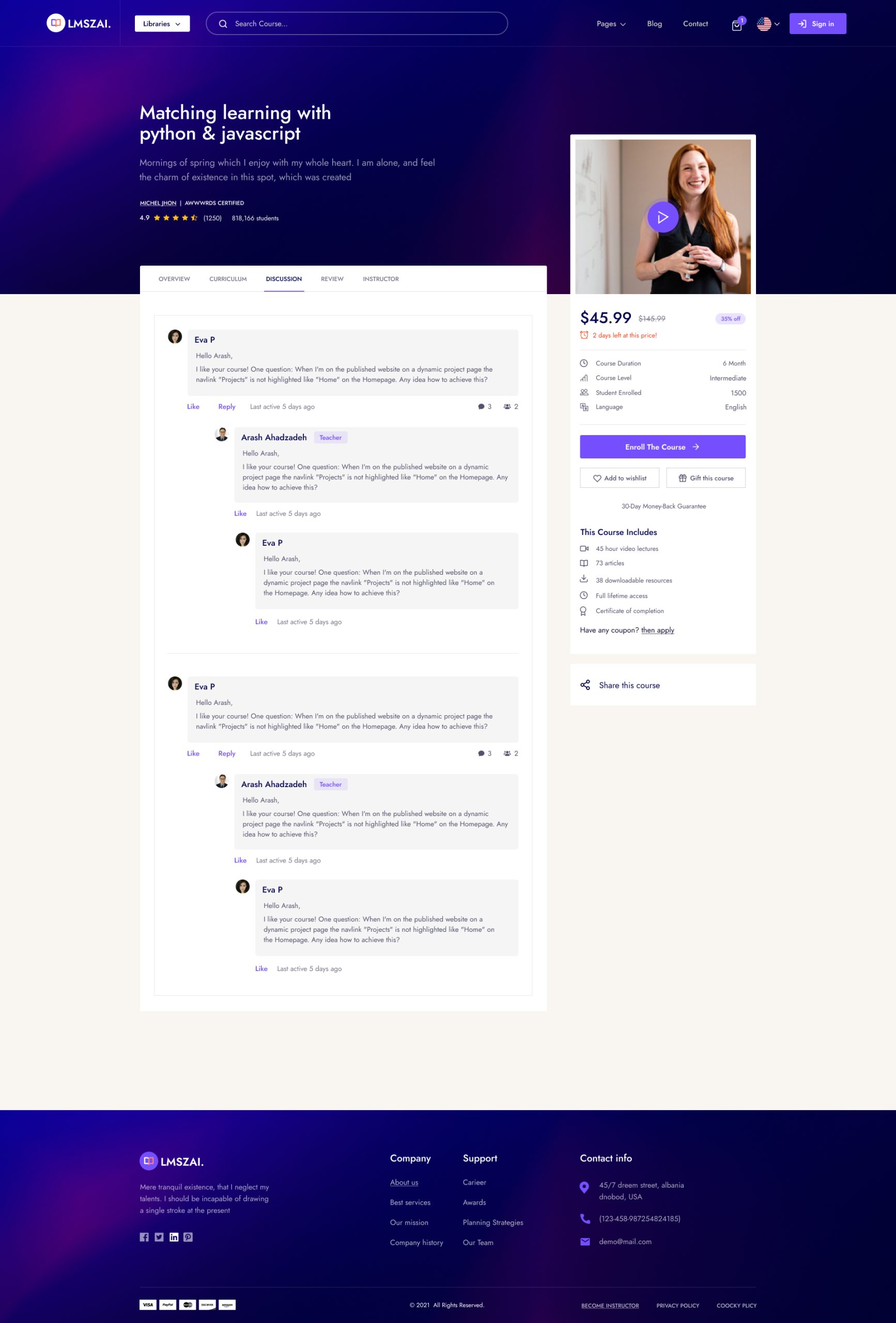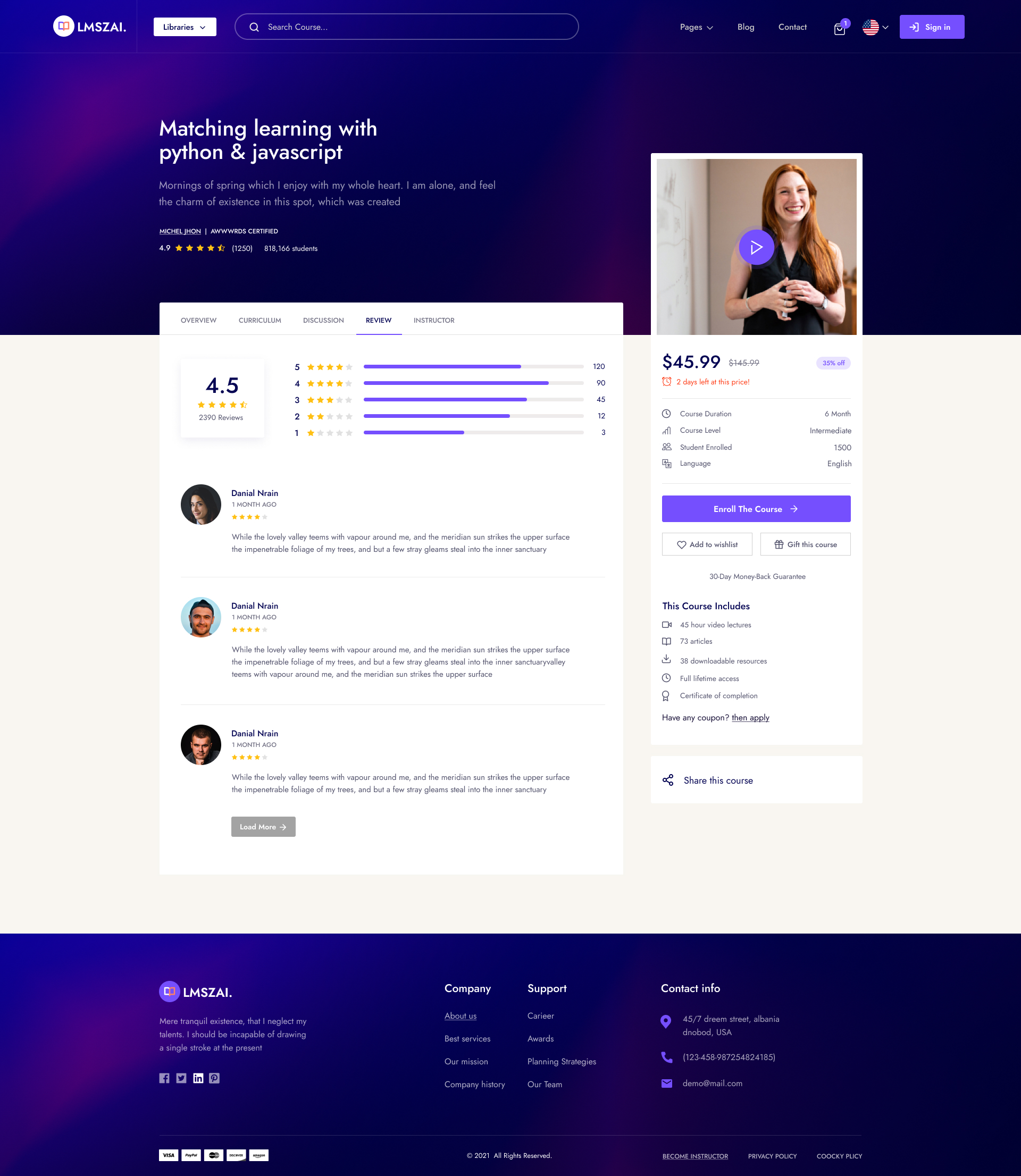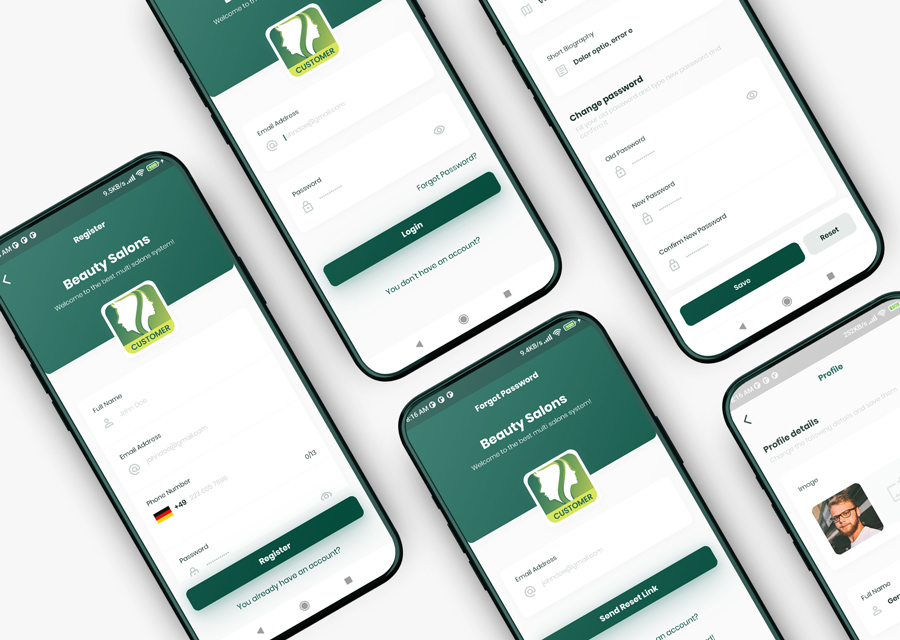A Learning Management System (LMS) is a software application that enables organizations to create, manage, and deliver online learning experiences. It is a cloud-based platform that allows organizations to create, manage, and deliver online courses, assessments, and other learning materials. It is used to track and monitor the progress of learners, as well as to provide feedback and support.
The LMS is designed to provide an efficient and effective way to deliver learning content to learners. It allows organizations to create and manage courses, assessments, and other learning materials. It also provides tools for tracking and monitoring the progress of learners, as well as providing feedback and support.
The LMS is designed to be user-friendly and intuitive, allowing learners to easily access and navigate the learning materials. It also provides tools for creating and managing assessments, as well as tracking and monitoring the progress of learners. It also provides tools for providing feedback and support to learners.
The LMS is designed to be highly scalable, allowing organizations to easily add new courses, assessments, and other learning materials. It also provides tools for creating and managing user accounts, as well as tracking and monitoring the progress of learners. It also provides tools for providing feedback and support to learners.
The LMS is designed to be secure, allowing organizations to protect their data and ensure the privacy of their learners. It also provides tools for creating and managing user accounts, as well as tracking and monitoring the progress of learners. It also provides tools for providing feedback and support to learners.
The LMS is designed to be cost-effective, allowing organizations to save money on training and development costs. It also provides tools for creating and managing user accounts, as well as tracking and monitoring the progress of learners. It also provides tools for providing feedback and support to learners.

1. User Management:
– Ability to create and manage user accounts
– Ability to assign roles and permissions
– Ability to track user activity
– Ability to manage user groups
2. Course Management:
– Ability to create and manage courses
– Ability to assign instructors to courses
– Ability to assign students to courses
– Ability to track course progress
– Ability to manage course content
3. Content Management:
– Ability to upload and manage course content
– Ability to create and manage quizzes and assessments
– Ability to create and manage assignments
– Ability to create and manage discussion forums
4. Assessment Management:
– Ability to create and manage assessments
– Ability to track assessment results
– Ability to generate reports on assessment results
5. Reporting and Analytics:
– Ability to generate reports on user activity
– Ability to generate reports on course progress
– Ability to generate reports on assessment results
6. Security and Compliance:
– Ability to ensure data security and privacy
– Ability to ensure compliance with industry standards
7. Integration and Automation:
– Ability to integrate with other systems
– Ability to automate processes and tasks
A Learning Management System (LMS) is a software application or web-based technology used to plan, implement, and assess a specific learning process. Typically, a Learning Management System (LMS) provides an instructor with a way to create and deliver content, monitor student engagement, and assess student performance. It also provides students with a way to access course materials, submit assignments, take quizzes, and receive feedback.
The main purpose of an LMS is to provide an efficient and effective way to manage the learning process. It can be used to create and deliver content, track student progress, and assess student performance. It can also be used to facilitate communication between instructors and students, as well as provide a platform for collaboration.
An LMS can be used in a variety of ways, including:
• Creating and delivering content: An LMS can be used to create and deliver content in a variety of formats, including text, audio, video, and interactive elements.
• Tracking student progress: An LMS can be used to track student progress and provide feedback on their performance.
• Assessing student performance: An LMS can be used to assess student performance and provide feedback on their progress.
• Facilitating communication: An LMS can be used to facilitate communication between instructors and students, as well as provide a platform for collaboration.
• Managing course materials: An LMS can be used to manage course materials, such as syllabi, assignments, and quizzes.
• Providing access to resources: An LMS can be used to provide access to resources, such as textbooks, videos, and other materials.
• Automating administrative tasks: An LMS can be used to automate administrative tasks, such as grading, attendance tracking, and course registration.
Overall, an LMS is a powerful tool for managing the learning process. It can be used to create and deliver content, track student progress, assess student performance, facilitate communication, manage course materials, provide access to resources, and automate administrative tasks.


 Banking
Banking Beauty
Beauty Booking
Booking Business
Business Concierge App
Concierge App Dating
Dating Deliver Safe
Deliver Safe Dietitian App
Dietitian App Ecommerce
Ecommerce Ecommerce app
Ecommerce app Education
Education Fitness App
Fitness App Food
Food Freelancer App
Freelancer App Grocery Delivery
Grocery Delivery Home Services
Home Services Hospital
Hospital Laundry
Laundry Management Systems
Management Systems Peer-To-Peer App
Peer-To-Peer App Pharmacy Delivery
Pharmacy Delivery Pickup & Delivery
Pickup & Delivery Service Apps
Service Apps Service websites
Service websites Sports Web
Sports Web Taxi
Taxi Tracking App
Tracking App

 IN
IN








